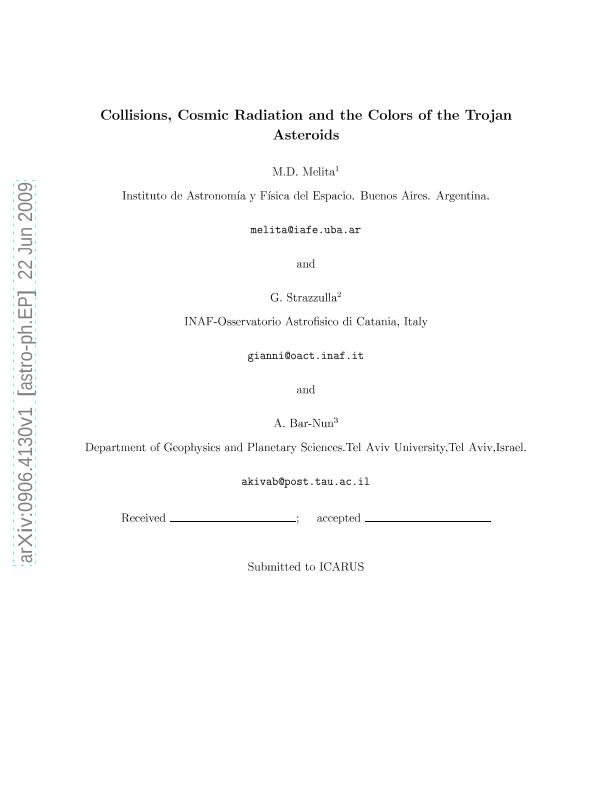Artículo
Collisions, Cosmic Radiation and the Colors of the Trojan Asteroids
Fecha de publicación:
04/2009
Editorial:
Academic Press Inc Elsevier Science
Revista:
Icarus
ISSN:
0019-1035
Idioma:
Inglés
Tipo de recurso:
Artículo publicado
Clasificación temática:
Resumen
The Trojan asteroids orbit about the Lagrangian points of Jupiter and the
residence times about their present location are very long for most of them.
If these bodies originated in the outer Solar System, they should be mainly
composed of water ice, but, in contrast with comets, all the volatiles close to the
surface would have been lost long ago. Irrespective of the rotation period, and
hence the surface temperature and ice sublimation rate, a dust layer exists always
on the surface. We show that the timescale for resurfacing the entire surface of
the Trojan asteroids is similar to that of the flattening of the red spectrum of
the new dust by solar-proton irradiation. This, if the cut-off radius of the size
distribution of the impacting objects is between 1mm and 1m and its slope is -3,
for the entire size-range. Therefore, the surfaces of most Trojan asteroids should
be composed mainly of unirradiated dust
Palabras clave:
Asteroids
,
Solar System Origin
,
Comets
,
Minor Planets
Archivos asociados
Licencia
Identificadores
Colecciones
Articulos(IAFE)
Articulos de INST.DE ASTRONOMIA Y FISICA DEL ESPACIO(I)
Articulos de INST.DE ASTRONOMIA Y FISICA DEL ESPACIO(I)
Citación
Melita, Mario Daniel; Strazzulla, G.; Bar Nun, A.; Collisions, Cosmic Radiation and the Colors of the Trojan Asteroids; Academic Press Inc Elsevier Science; Icarus; 203; 1; 4-2009; 134-139
Compartir
Altmétricas




